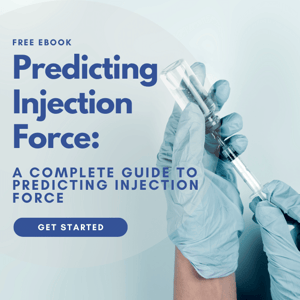
The Best Practice for an Accurate Estimation of the Injection force of Protein Therapeutics Avoiding Common Pitfalls
Application Note Download
Injectability is one of the screening criteria in determining the candidacy of protein therapeutics. It is determined by the required force during injection. For a fixed syringe geometry and delivery rate, the required injection force is solely determined by the viscosity of the therapeutics. (see Higher Shear Viscosity Measurement and Injectability Application Note).
Therefore, candidate protein therapeutics are scrutinized if their viscosity is higher than the pre-set threshold. The cut -off viscosity generally ranges from 20 to 40 mPa-s depending on the device. However, this type of generalization without specifying the shear rate could potentially lead to a false negative determination of an otherwise excellent therapeutic resulting in a significant financial loss during development. In order to avoid this pitfall, download the application note to learn what to do and what not to do when it comes to selecting your proteins.
Therefore, candidate protein therapeutics are scrutinized if their viscosity is higher than the pre-set threshold. The cut -off viscosity generally ranges from 20 to 40 mPa-s depending on the device. However, this type of generalization without specifying the shear rate could potentially lead to a false negative determination of an otherwise excellent therapeutic resulting in a significant financial loss during development. In order to avoid this pitfall, download the application note to learn what to do and what not to do when it comes to selecting your proteins.
KEYWORDS:
- Viscosity
- Syringeability
- Protein Therapeutics
- High Shear
- Injection Force
- Shear Thinning
- Newtonian
.jpeg?width=300&name=Woman%20scientist%2c%20documents%20and%20hands%20writing%20_575258496-min(1).jpeg)
TOUCH
Read
Applications
ReadApplications

Read
Testimonials
ReadTestimonialsGo to page

Browse
Webinars
Browse WebinarsGo to page
.png?width=200&height=58&name=RheoSense%20Logo%20(REGISTERED).png)



